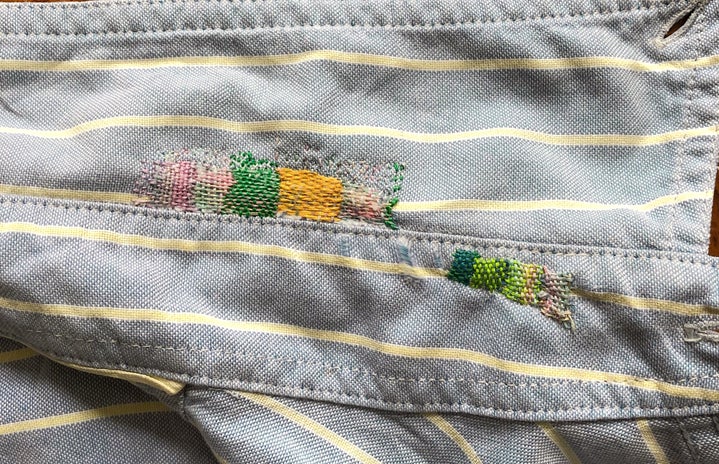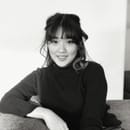In elementary school, I had a pair of green and pink Rocket Dog shoes I loved so much I begged my parents to get me another pair when they became completely worn down from school yard shenanigans. In middle school, I had a big gray jacket that I wore every day, even in spite of the holes forming in its sleeves. When I formed particularly strong attachments to clothing that bordered on unwearable, my mom would secretly toss them out in hopes that I wouldn’t notice. I always noticed.
There’s a phrase in Japanese that my mom would use to describe the state of my much loved clothing: binbō kusai. The phrase translates to “reeking of poverty,” which is pretty terrible no matter how you try to interpret it.
And my mom was right. There was no real reason for me to wear these items so stubbornly, aside from the fact that I just wanted to. I can see now that she meant well, but it always seemed strange to me that clothing is replaceable. In my mind, what you wear is an extension of who you are. When you break an arm, you don’t just toss it out and get a new one. You get it fixed. It’s not a perfect analogy, but you get what I mean.
When quarantine first began, while others started baking sourdough or writing novels, I picked up a needle and began to sew. I have no clue how to create a garment from scratch, but I sure as hell know how to patch a hole or two. From totes to sweatpants, I started to fix up anything I could get my hands on.
When you mend an article of clothing it almost never looks ‘as good as new,’ but that’s the beauty of it. There’s a community of people online who actually chose to call attention to their repair job through visible mending, whether it be by embroidering over a hole, darning with colorful thread, or slapping on a funky patch.
The idea that there is beauty to be found in imperfect objects is a pillar of traditional Japanese wabi-sabi aesthetics. By fixing an item, we extend its life. The breaking of the object becomes a part of the history of the object, rather than being the end of it. Two prominent examples of Japanese visible mending are kintsugi—repairing broken ceramics with gold—and sashiko mending. Sashiko in particular has become popular in Western visual mending circles for both its beauty and strength of reinforcement.
It could be said that repair culture was just an inevitable pre-mass production era inconvenience, that we’re past that now, and that replacement has rightfully become the norm. But if you love an article of clothing enough to spend money on it, you should also love it enough to spend time repairing it. Are your jeans wearing thin? Sew a patch into the crotch to reinforce it. Found a weird stain on your shirt? Embroider a flower over it. There are so many different ways to freshen up your wardrobe without purchasing brand new items.
It’s true that, with fast fashion and two day shipping, most articles of clothing are instantly replaceable. By choosing to mend our clothing, we choose to invest time in ourselves and assert that a garment is ours. Because the wear in your clothing is unique to you and the life you live, the way you repair the item will be unique to you as well.
It takes loving hands and patience to mend a garment. We mend delicate and damaged clothing, not just with the intent to fix it, but with the intent to strengthen it.
Maybe this is a product of my ‘shinto-lite’ spiritual leanings, but the way I see it, everything from a rock and river to a toilet and clothing has a life in it. There’s joy to be found in fixing up a garment that needs a little bit of care and, best of all, it’s free to learn.


